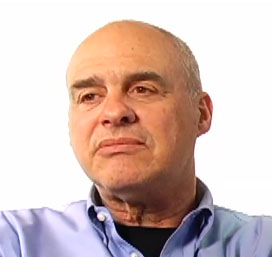Surprising Science
All Stories
The burgeoning field of animal personality research seeks to figure out why individual members of a species are so unique — and why they remain so through their entire lives.
About 4.4% of American adults are believed to have attention-deficit hyperactivity disorder, and more and more of them are being diagnosed and treated with medication.
As many as thirty percent of Americans have allergies, and most of the pollen they are affected by comes from trees planted nearby. Cities could relieve sufferers by planting low-pollen street trees.
Bestselling cookbook author and New York Times food columnist Mark Bittman stopped by the Big Think offices a few weeks ago to talk with us about eating, cooking, and the […]
Maia Szalavitz looks at research into the addictive quality of fattening foods, which suggests that long-term exposure to fattening items make users less likely to derive pleasure from them.
George Prochnik writes that the ever-present background noise in modern society is more than annoying — it’s actually harmful to our cardiovascular health and concentration, as well as our political discourse.
Researchers have come up with a reason why sand grains can build up electrical charges as they collide with one another — sometimes to the point of creating lightning during dust storms and volcanic eruptions.
Scientists have figured out a new technique for revealing images of hidden objects which could one day allow doctors to see more precisely through the human body without surgery.
I would like to thank all the people who showed up on Thursday in New York to be part of filming Sci Fi Science, second season. We filmed two episodes […]
Apple’s appeal has gone beyond good business inspiring in its customers firm loyalty to the brand and a following that resembles religious devotion.
The Los Angeles Times calls for studies on the effects of secondhand smoke in outdoor environments in order to determine whether smoking outdoors should be banned.
New research finds correlation between worried pregnant women and their children who show slower cognitive development, but don’t worry, the study concludes.
Ahead of Saturday’s iPad launch, CNN looks at Apple’s new computer to answer questions and distinguish it from other computers already in our homes and offices.
Romanians flocking to burger joints in their post-communist gorge may soon be subject to a junk food tax intended to reduce national obesity rates and fill government coffers.
U.K. law prohibits selecting the sex of your child unless serious medical issues are involved and this has Brits flocking to the U.S. to balance out their families.
A Tel Aviv University researcher has found that young men who smoke are likely to have lower IQs than their non-smoking peers.
Many people were left gasping when President Obama unveiled his new plan for outer space, including his proposal to cancel NASA’s Constellation program. It turns out that the great recession […]
A group of scientists is hoping to transform fast food waste oil into a high-tech polymer and create a “smart roof coating system” which will help to insulate homes.
Researchers have come up empty in their quest to link genetic “copy-number variations” to diseases like breast cancer and diabetes.
Scientists have discovered the reason why the earth wasn’t covered with a layer of ice four billion years ago, when the Sun’s radiation was much less than it is today.
Some journalists believe that Apple’s forthcoming iPad could save their industry, but it’s likely that publishers are being overly optimistic in their pricing schemes.
No man is an island…or could be if he tried. Even traits that we believe to be products of our individual genes, choices, or experiences—from our weight to our taste […]
Researchers at the University of Utah have found that 2.5 percent of the population is able to do two or more tasks at the same time without hurting their ability to perform each.
Columbia University professor Gordana Vunjak-Novakovic says her team of researchers has grown a human jaw bone using stem cells taken from bone marrow.
It cost $10 billion and took 16 years, but the Large Hadron Collider finally went into operation yesterday in Switzerland — and the world didn’t end after all.
Celebrity chef Jamie Oliver may not be starting a “food revolution” with his push to make school lunches healthier, but Marion Nestle gives him credit for trying to get “real food” back into cafeterias.
Not long ago, a report quoting NASA scientists was issued by the National Academy of Science, the highest scientific advisory body to the United States Congress. The report said something that used […]
South of the Sundarbans mangrove forest, in the Bay of Bengal, lies one of those tiny flecks of land at the center of endless negotiation between two countries—a little patch […]
March has its share of strange and obscure holidays. The first of the month is National Pig Day, the fifth is Multiple Personality Day (a chance for anyone to get […]
Today’s installment of our series “The Future in Motion” features Joseph Sussman, Professor of Civil and Environmental Engineering at MIT, and Douglas Malewicki, Aerospace engineer and inventor of the SkyTran. The SkyTran is […]







